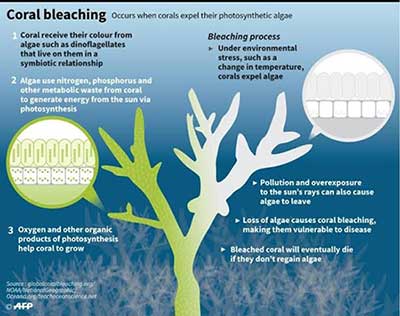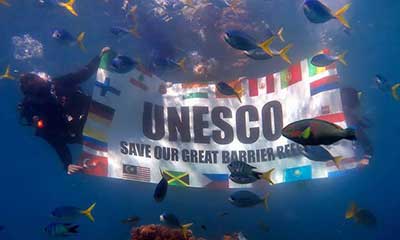Great Barrier Reef at Risk
The world's most extensive coral reef ecosystem and a World heritage site, the Great Barrier Reef is facing perilous consequences of anthropogenic activities. According to Coral Reef Studies conducted by James Cook University , Australia’s Great Barrier Reef has lost more than half its coral in the last three decades and scientists fear the loss caused by frequent bleaching will compromise its ability to recover. Bleaching events have rendered coral reefs in a moribund phase . Record breaking temperatures induced by global warming and climate change is destroying Marine biodiversity rapidly.
About Coral Reef :
Coral reefs are popularly known as the "Rainforests of the oceans". Covering less than one percent of the ocean floor, coral reefs support an estimated 25 percent of all known marine species. Not only are they diverse communities, but the coral skeletons - like trees - contain potentially long term records of climate. Corals are marine invertebrates. That means they have no vertebral column/spine. They typically live in compact colonies of many individual polyps. The group includes the important reef builders that inhabit tropical oceans and secrete calcium carbonate (the main component of pearls and snail shells) to form a hard skeleton.

What is Coral Bleeching ?
Warmer water temperatures can result in coral bleaching. When water is too warm, corals will expel the algae (zooxanthellae) living in their tissues causing the coral to turn completely white. This is called coral bleaching. When a coral bleaches, it is not dead. Corals can survive a bleaching event, but they are under more stress and are subject to mortality. The corals and algae have a mutualistic relationship. The coral provides the algae with a protected environment and compounds they need for photosynthesis. In return, the algae produce oxygen and help the coral to remove wastes.

About Great Barrier Reef :
The Great Barrier Reef, which extends for over 2,300 kilometers (1429 miles) along the northeastern coast of Australia, is home to over 9,000 known species. The Great Barrier Reef spans an area half the size of Texas. It was world heritage listed in 1981 by UNESCO as the most extensive and spectacular coral reef ecosystem on the planet. According to UNESCO , According to UNESCO, The Great Barrier Reef is a site of remarkable variety and beauty on the north-east coast of Australia. It contains the world’s largest collection of coral reefs, with 400 types of coral, 1,500 species of fish and 4,000 types of mollusc. It also holds great scientific interest as the habitat of species such as the dugong (‘sea cow’) and the large green turtle, which are threatened with extinction.







